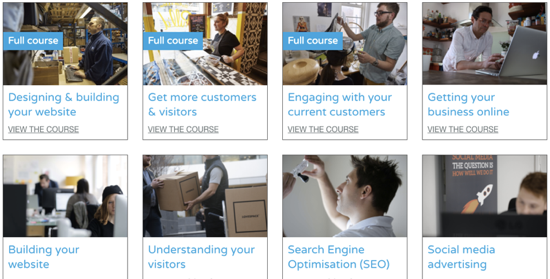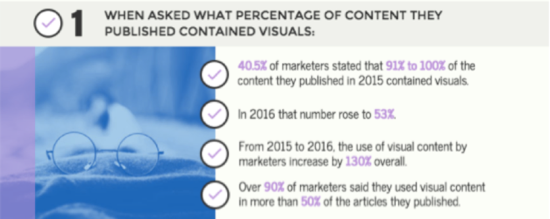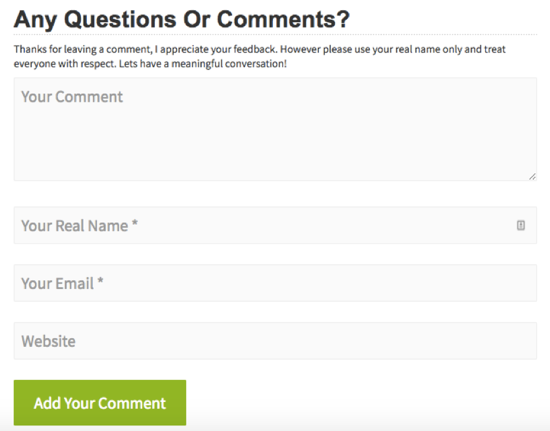Six key elements of a successful business blog
What makes a successful business blog? Is it just high-quality content? Or are there also other elements that contribute to its success?
Sure, publishing great content is a must as it helps to educate and entertain readers. It also helps to position yourself as an industry expert.
But purposeful content isn’t the only thing that popular blogs have in common. So, if you’ve been focusing on just publishing words every day, hit pause, consider this list, and find out what the best blogs are doing and how you can emulate their success.
1. Cover topics people want to read about
Always, and I mean ALWAYS, write about what your audience wants to read, not about what you want to write about.
For example, every travel blogger out there writes about their trips, shares photos and advice on what and where to eat, what to visit, etc. Of course, a travel blog isn’t a travel blog without this kind of information. But is that all there is?
I have this travel blogger friend who realised, by simply looking at the questions people were asking in the comments on Facebook and on his blog, that what his audience wanted to know was: “Hey, which sites do you use to always find those amazingly cheap flights?” and “Which apps and tools do you use to get around when you don’t have access to the internet?”.
So he wrote a piece listing and describing all the smartphone apps and tools he uses when he travels abroad. Needless to say, the article was a smash hit, considering it’s something his readers were curious about. Not long after, articles covering smartphone apps for travel started popping up on other travel blogs.
The point is this: you can’t fail if you take the time to get to know your audience and find out what they’re interested in reading on your blog. And then give it to them.
When your blog covers topics your audience finds useful, interesting, different, they’ll be more compelled to read it, share it, comment on it, and engage with it.
Don’t know how and where to get information on your target audience? Read our guide on why buyer personas are important and how to create yours. It’ll teach you how to create a profile on your ideal customer and where to get all the information you need on them, including their needs, concerns and problems.
2. Share actionable advice that solves problems
Again, if you know your audience and the problems they’re struggling with (that are, of course, related to your business), why not help your audience tackle those issues? Use your knowledge and expertise to write blog content that is useful to your readers, and can help them solve their problems.
For example, at 123 Reg you don’t just get all the tools you need to get your business online from cheap domain names and web hosting to pay-per-click management services. We also try to provide you with the knowledge and advice you need so you can solve and overcome any problem you might encounter while growing your small business.
By the way, have you checked out our Online Business Training? It’s free and you can find lots of fantastic, in-depth courses on everything from designing and building your website to social media advertising and search engine optimisation.
No matter what business you’re in, look into the problems your audience is facing. And if you have the knowledge to help solve them, deliver it on your blog. If it’s helpful and practical, it will spread. And that will help to attract even more readers and potential customers.
3. Be empathic
If you look at the most successful blogs in any industry, you’ll notice this one important thing: the content speaks directly to their audience. Empathetic content helps you to get closer to readers because it evokes strong emotions and can inspire people to take action.
But to be able to create empathetic blog content, you need to understand who your readers are. What are they looking for? What are their interests, pain points and concerns? What moves them?
Use that information to create blog content that addresses those problems as if they are your own. Provide them with solutions and actionable advice they can use. Assure them that the resolution of their problems is your main concern.
If you can do that, you’ll be more successful at creating content that your audience relates to. Because here’s the thing: if you can make an emotional connection through your blog content, people will not only stay longer, but they’ll also remember what they read. They may even spread the word about you to their social network of friends and also subscribe to your blog mailing list.
4. Make use of visual content
Visual content is powerful. The stats produced by the Venngage team prove that visual content is a trend that’s here to stay.
Why? Because visual content can get your blog read. And it also adds to the story you’re telling on your blog. So, don’t hesitate to use visuals, in whatever format you’re comfortable with:
- Images
- Videos
- Infographics
- Presentations
- GIFs
- Charts
The following resources can come in handy, whether you’re looking to use stock images or to create your own videos and infographics:
- 18 places to find stock images that will make your site shine no matter your budget
- The 10 best tools for visual storytelling
- An in-depth guide on video marketing covering everything from planning to production
5. Tell your readers what to do next
A successful blog is one where the author is always keen on connecting and building a relationship with readers.
So, ask your readers to weigh in with their thoughts and opinions. Ask them to comment and to share your articles on their social media networks. Ask them to subscribe to your blog’s RSS or mailing list so they can receive your latest articles in their inbox.
In other words, ask them to engage and let them know this is a two-way communication and that you care about their comments and suggestions.
Here is an example from Expert Vagabond, a travel blog:
Encouraging readers to comment on your blog articles doesn’t just help you to build a loyal community of readers but it can also help boost your search engine optimisation (SEO) efforts. This article explains why (and how) blog comments can still benefit your marketing and SEO.
6. Update regularly
Successful blogs are updated frequently. Readers, once engaged, grow to rely on them for the great information and engaging conversations that happen on those blogs.
So if you publish a blog post now and then disappear for a month, your readers will stop visiting and quickly forget you exist. They’ll just look elsewhere for the information they need.
One thing you can do is to create a content calendar that’ll help you to keep a consistent publishing schedule so your blog is never too long without fresh content.
There is a section on creating a content calendar in our free blog and content marketing course. The course also covers the blogging platforms to choose from, what to write about on your blog and how to measure its success.
Summing up
So there you have it – the six key elements that any blog needs to be successful.
Your turn now: have you noticed other things that successful blogs are doing to attract and keep readers engaged? Tweet us your comments @123Reg.




